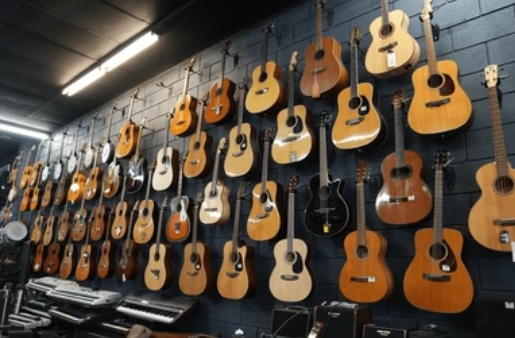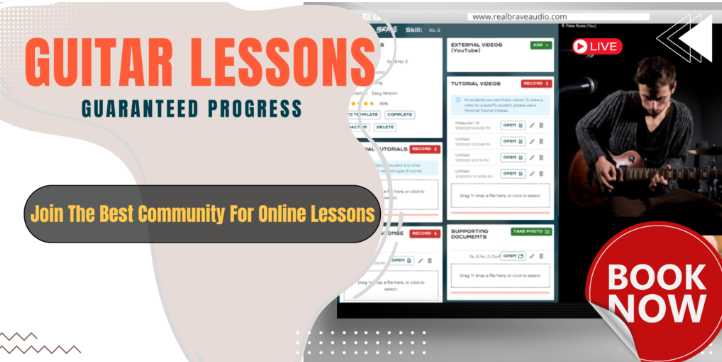Triad Chord Scales for Guitar: An Easy Guide

Learning triad chord scales is one of the most effective ways to enhance your guitar playing, whether you’re diving into solos or simply looking to expand your chord knowledge. Is important to learn about them because they are the foundation of many musical compositions, and mastering them will help you develop a better understanding of music theory and the fretboard.
In this guide, we’ll break down what triads are, how to play them on the guitar, and how you can use them to build triad chord scales. Let’s get started!
What Are Triads?
Is a three-note chord, consisting of a root, a third, and a fifth. These intervals define the basic structure of chords in music. Triads come in four main types:
- Major – Root, major third, perfect fifth (e.g., C – E – G).
- Minor – Root, minor third, perfect fifth (e.g., A – C – E).
- Diminished – Root, minor third, diminished fifth (e.g., B – D – F).
- Augmented – Root, major third, augmented fifth (e.g., E – G# – C).
Triad Shapes on the Guitar
On the guitar, these can be played across different string sets and in various inversions. Let’s explore how to play triads across three common string sets:
- (High E, B, G)
- (B, G, D)
- (G, D, A)
For each string set, we can create three inversions for every type: root position, first inversion, and second inversion.
Root Position Triads:
- Major: Root on the bottom, major third, and perfect fifth.
- Minor: Root on the bottom, minor third, and perfect fifth.
Example:
- For the C major triad (C – E – G) on string set 1, you’d play:
- G string (5th fret for C)
- B string (5th fret for E)
- High E string (3rd fret for G).
First Inversion:
- The third is now the lowest note, followed by the fifth and the root on top.
Example:
- For the C major triad first inversion, play E (5th fret B string), G (3rd fret high E), and C (5th fret G string).
Second Inversion:
- The fifth is the lowest note, followed by the root and the third.
Example:
- For the C major triad second inversion, play G (open G string), C (1st fret B string), and E (open high E string).
Triad Chord Scales
A triad chord scale involves playing a series of triads across the neck, corresponding to the chords within a given scale. Let’s take the C major scale (C – D – E – F – G – A – B – C) as an example.
For each note in the scale, we’ll build a triad:
- C Major (C – E – G)
- D Minor (D – F – A)
- E Minor (E – G – B)
- F Major (F – A – C)
- G Major (G – B – D)
- A Minor (A – C – E)
- B Diminished (B – D – F)
These triads can be played along the neck, starting with the root position and working through the inversions.
Example of a Triad Chord Scale:
Let’s apply this to string set 1 (High E, B, G strings). For the C major scale, starting from the root position triad:
- C major: G string (5th fret), B string (5th fret), high E string (3rd fret)
- D minor: G string (7th fret), B string (6th fret), high E string (5th fret)
- E minor: G string (9th fret), B string (8th fret), high E string (7th fret)
- F major: G string (10th fret), B string (10th fret), high E string (8th fret)
- G major: G string (12th fret), B string (12th fret), high E string (10th fret)
- A minor: G string (14th fret), B string (13th fret), high E string (12th fret)
- B diminished: G string (16th fret), B string (15th fret), high E string (14th fret)
- C major (octave): G string (17th fret), B string (17th fret), high E string (15th fret)
Repeat this process on the second and third string sets to familiarize yourself with triads across the entire fretboard.
Applications of Triad Chord Scales
Triad chord scales are great for creating melodies and harmonies while soloing or accompanying other musicians. By playing triad chords instead of full six-string chords, you can create a more minimalist and open sound.
Now, let’s see few ways to apply triad chord scales in your playing:
- Soloing with Triads: Use triads as an alternative to single-note lines. Moving through triads along the scale gives your solos harmonic depth.
- Chord Melody: In chord melody playing, triads are perfect for harmonizing melodies or creating texture beneath a lead line.
- Improvisation: When improvising, focusing on triads will give your playing a sense of direction and harmonic clarity. Try playing through the triads of a scale or key to complement a chord progression.
- Rhythm Guitar: For rhythm playing, triads help simplify complex chords. You can outline the chord progression using triads, providing a less cluttered, more refined sound.
How to Practice Triad Chord Scales
These steps to practice triad chord scales on the guitar:
- Start with One String Set: Focus on one string set at a time (e.g., strings 1, 2, and 3). Learn the root position, first inversion, and second inversion for major and minor triads on that string set.
- Practice the Major Scale in Triads: Pick a scale (like C major) and play triads along the scale. Start with root position triads, then try the first and second inversions.
- Switch String Sets: Once you’re comfortable with one string set, move to another. Master all three sets to cover the fretboard efficiently.
- Use a Metronome: Practice playing the triads in time, gradually increasing the tempo to improve your accuracy and speed.
- Incorporate Triads into Songs: Apply your triad knowledge to real music by using them in songs or creating your own chord progressions.
Final Thoughts
Mastering these chord scales will deepen your understanding of harmony and open up new creative possibilities on the guitar. Whether you’re looking to solo, write songs, or simply improve your chord vocabulary, triads are a powerful tool that every guitarist should know. Start slow, focus on your technique, and soon you’ll be moving across the neck with triad chord scales effortlessly!
If you’re interested in learning an instrument, at Real Brave, we offer an incredible experience like no other place in music lessons for kids and adults by guiding them from the beginning stages of getting to know an instrument all the way through performing for family and friends on stage. Our instructors come from all over the world, bringing extensive experience on a wide range of instruments. Click below and book a free lesson with us!
Author: Daniel Powers Jr, the founder of Real Brave™, serves as the chief inspiration to thousands of students in the Real Brave music instruction program. He’s also the visionary behind PracticePad™, an online platform for live one-on-one online music lessons, lesson tracking, and scheduling. Beyond his entrepreneurial pursuits, Daniel leads a non-profit organization that provides formerly homeless children with access to music education, making a profound impact on their lives. His unwavering dedication to music, innovation, and education continues to inspire individuals to reach their fullest potential while creating positive change in communities. Follow Real Brave on all the socials:
youtube.com/@realbraveinc
twitter.com/realbraveinc
https://www.tiktok.com/@realbraveinc
instagram.com/realbraveaudio
facebook.com/realbraveinc






